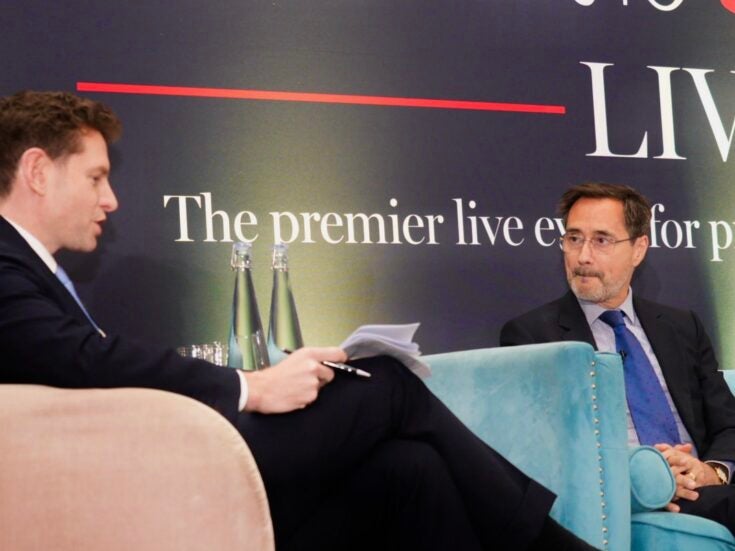A small town in Australia has seduced the world’s top chefs and emerged as the unlikely star of the prized truffle market. Rob Davies is on the scent
Manjimup, Western Australia: population 4,164. Kangaroos maraud through the bush, grizzled woodsmen cruise around in dirt-spattered pick-up trucks and Australian rules football is among the few acceptable extracurricular pastimes.
Yet this microcosm of Antipodean culture boasts a treasure to make even a Paris gourmand salivate, for Manjimup has quietly become the surprising new mecca for one of the world’s most sought-after culinary treats: the black winter, or P’rigord, truffle. ‘Most Australians wouldn’t have had a clue what a truffle was ten years ago… They’d probably have thought it was a chocolate,’ says Alf Salter, chairman of Manjimup’s Truffle & Wine Company.
Since 2003, when Guinness the truffle-hunting labrador sniffed out a 168g specimen, this firm has grown rapidly to become the largest truffi’re in the world and is on course to produce some four tonnes in 2015, while the more optimistic projections suggest it could reach an upper limit of seven tonnes with its current acreage. To put that into perspective, estimated global production of black truffles has fallen as low as 40 tonnes in recent years.
The emergence of a world-beating truffle industry in this remote corner of the world, 200 miles south of Perth, is no accident. It is the result of a partnership between two unlikely bedfellows: scientist Nick Malajczuk and self-confessed ‘redneck’ Al Blakers.
Blakers owned a plant nursery which was already hosting experiments with mycorrhizae — the name for the symbiotic relationships between a fungus and the roots of a tree. The original intention was to use fungi to boost the growth rate of the Tasmanian bluegum tree, used by the timber industry, but Blakers speculated that it might work to reverse the focus — planting trees purely in order to grow truffles. The same theory had been Malajczuk’s pet project for some years already, and when colleagues put the pair in touch the combination proved a winning one.
Their method was to ‘inoculate’ young oaks and hazelnut trees with the tuber melanosporum fungus, aka the black winter truffle. After finding some willing investors they planted their first trees at the Truffle & Wine Company, and as the trees flourished so did the truffles, taking shape beneath Manjimup’s fertile soil.

Malajczuk, a stoic but obsessive mycorrhizae expert, was the scientific brains behind this method. A leader in his field, he had developed an interest in the pungent mushrooms while doing post-doctorate work in France; these days, he flies around the world advising farmers hoping to emulate the success of Manjimup in New Zealand, the US and beyond.
Blakers’ role in the early days was to provide trees from his nursery, but he also had the vivacity and bombast required to help get a nascent industry off the ground. With his long shock of unruly hair (not cut since 1986), he is a familiar sight in the area, riding around in a truck with his shotgun resting on the back seat. ‘There’s no shortage of tough bastards around here, blokes who know what a hard day’s work is,’ he drawls, in an accent that could sandpaper an oak tabletop. ‘We call a spade a spade and if shit needs sorting we sort it.’
He joined the Australian air force aged fifteen — working on French-built Mirage fighter jets — and later picked up the family trade as a farmer and nurseryman supplying the timber industry. In his own words, he was a natural born ‘redneck’ or, to use the more Australian term, a ‘bushy’. ‘Now I grow bloody truffles!’ he says, as if still surprised and delighted at finding himself mixing with the world’s top chefs and holding forth on gourmet food.
’Heston Blumenthal raves about our product, reckons it’s the best thing since sliced bread,’ he boasts. ‘I love foie gras and all that stuff now. Haven’t got me head around caviar yet, though. Some of it’s not bad, but some of it’s bloody crap.’
With his unvarnished conversational style, he isn’t shy about blowing his own trumpet when it comes to his role in Manjimup’s success. ‘My truffles,’ by which he appears to mean any truffles grown in the area, ‘go to all the best restaurants and demand is ten times what we can supply.’
Like most people around here, Blakers believes that little Manjimup will soon leave France and Spain trailing as the global centre of truffle production, and one need look no further for evidence of that trajectory than the Truffle & Wine Company’s four successive years of profit, less than a decade after commercial production began. While earnings aren’t huge — projections say between ’1 million and ’2 million this year — their plans are ambitious, and an unnamed Sydney fund management company, looking after ’4 billion of assets, recently bought into his plan, snapping up a 20 per cent stake.

Salter, chairman of the truffle company, is considering acquisitions, locally and overseas, and aims to build a global luxury brand that guides truffles from cultivation all the way to the shelves of high-end grocery stores. ‘The French market truffles like they’re potatoes,’ he laments. ‘They deserve a lot more respect than that.’ Salter’s client roster already boasts a galaxy of Michelin stars. Three-star restaurants with his truffles in their larder include the Fat Duck in the UK, Otte e Mezzo in Hong Kong and Grace in Chicago, while a host of two- and one-star establishments also get their supply here.
This address book of high-profile customers is testament to the exalted position that P’rigord truffles occupy in the hearts and stomachs of gastronomes. In two centuries they have graduated from a seasonal delicacy beloved of southern Europe’s peasant-folk to the star turn of many a menu. But European truffles have, for the most part, been found growing in the wild by independent hunters, rather than cultivated in an organised fashion, and with the rising tide of industrialisation, not to mention two world wars, the amount of pristine woodland where they can grow undisturbed has diminished sharply.
That has allowed the Wine & Truffle Company to become the world’s largest truffi’re in short order, thanks to the success of its more structured approach coupled with its prime conditions. Its fertile soil has already garnered the Manjimup area a reputation for moist and sweet apples, while its towering, resplendent karri and jarrah trees once made it the heart of Australia’s timber industry. Would-be vintners have also set up shop here in the hope of emulating the success of the nearby Margaret River, famed for its dark and minty Cabernet Sauvignons.
But truffles have fast become the crop most associated with the area. It’s no wonder they now have an annual celebration of the famed fungus, named — as only Australians would — the Truffle Kerfuffle.
’
HOW TO FIND TRUFFLES
To find truffles, experienced hunters traverse the rows of trees, scouring the ground for clues. They are looking for cracks created (hopefully) by the growth of a hefty mushroom. Once the telltale signs have been spotted, they dust the earth with a light-coloured sand to indicate where to dig (and just as importantly, where not to tread).
In the woods of southern Europe, pigs were traditionally used to locate the mushrooms thanks to their natural affinity for the pungent aroma (which apparently smells like the sex hormones of male pigs). But obdurate swine can’t be trained not to gobble up the valuable subterranean treasure on sight and have even been known to bite their handlers in a gluttonous frenzy.
These days, well-drilled dogs — mostly labradors thanks to their intelligence and obedience — have taken over. It is their job, accompanied by skilled handlers of course, to identify which of the marked sites contain truffles and which are red herrings. There follows a slow, delicate process akin to unearthing fragile archaeological remains.
It is crucial that the truffle be removed intact from the ground. A large pristine specimen could be worth more than ’1,000, so it pays
to be as careful as possible. After harvest, the aim is to get the rich bounty from Australian earth to your plate as quickly as possible. It’s a complicated production line that commands a hefty price tag at the end of the chain. Few epicureans would deny that the prize is more than worth the effort.







